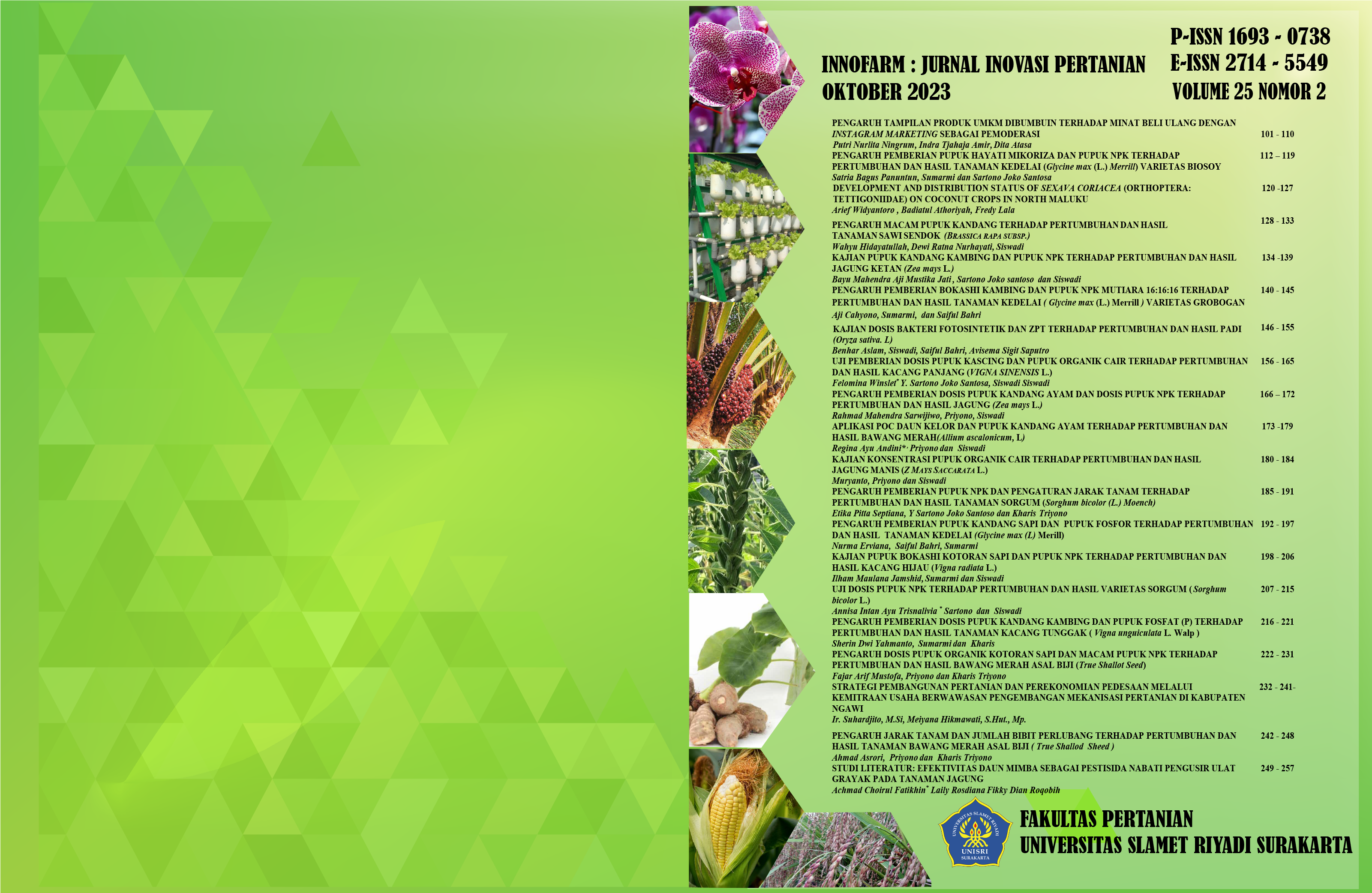AGRICULTURE AND RURAL ECONOMIC DEVELOPMENT STRATEGIS THROUGH BUSINESS PARTNERSHIPS WITH AN INSIGHT INTO THE DEVELOPMENT OF AGRICULTURAL MECHANIZATION
Strategy, Development, Agriculture, Rural, Agricultural Machinery
DOI:
https://doi.org/10.33061/innofarm.v25i2.9899Abstract
Agricultural and rural economic development strategies through business partnerships with an insight into the development of machine tools. The purpose of writing this acuentific work ia for (1) Discusses the rural economic profile as a basic for planning development programs, (2) Discusses strategies for rural development with an agribusines perspective, and (3) Formulate policies for the development of Machinery in a comprehensive and integrative manner. The process of economic development of a nation implicitly requires the tranformation of traditional agriculture into advanced or modern agriculture. It is in the tranformation process that patterns of participation play a role. Advanced agriculture is agriculture that has the ability to continually adapt to ever changing and demands. Agribusines partnership institusions that can eliminate these various failures are integrated agribusines business institusions in the form of integration between (farmer, trader, processor) and products qualityraw materialis, excellent post Harvest handlinh and guaranteed food safety). This model is supported by the institutional revitalization of farmer groups, agricultural extension, and partner companies.
Downloads
Published
Issue
Section
License
Copyright (c) 2023 Suhardjito Suhardjito, Meiyana Hikmawati

This work is licensed under a Creative Commons Attribution-NonCommercial 4.0 International License.
Authors who publish this journal agree to the following terms:
- Authors retain copyright and grant the journal right of first publication with the work simultaneously licensed under a Creative Commons Attribution License that allows others to share the work with an acknowledgement of the work's authorship and initial publication in this journal.
- Authors can separately make additional contractual arrangements for non-exclusive distribution published by the journal (e.g., publish it in a book), with an acknowledgement of its initial publication in this journal.
- Authors are allowed and encouraged to send their work via online (e.g., in the institutional repositories or their website) after published by the journal.















